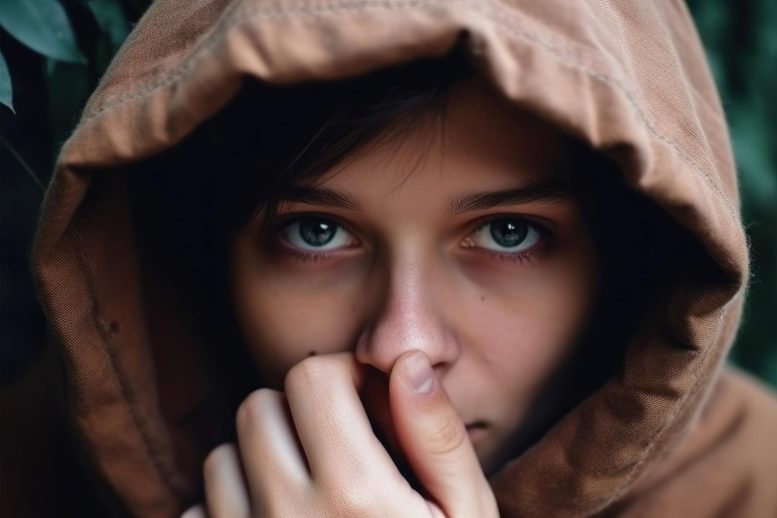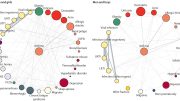
A new study supported by the National Institute of Mental Health has revealed an increase in suicide rates among young people during the COVID-19 pandemic.
A recent study found that suicide rates among US youth aged 5-24 years increased during the COVID-19 pandemic, particularly among males, preteens, young adults, and specific racial and ethnic groups. This highlights disparities that have likely been worsened by the pandemic and underscores the need for targeted suicide prevention efforts.
Suicide is a leading cause of death among young people in the United States. Rates of youth suicide deaths were rising before the coronavirus (COVID-19) pandemic began, so it is critical to understand how the pandemic impacted this public health crisis. In a new study supported by the National Institute of Mental Health, researchers examined national youth suicide trends and characteristics in the United States before and during the COVID-19 pandemic.
A research team led by Jeffrey Bridge, Ph.D., Donna Ruch, Ph.D., and Lisa Horowitz, Ph.D., MPH, analyzed national suicide data from the Centers for Disease Control and Prevention. The researchers first identified all U.S. youth aged 5 to 24 years with suicide listed as the cause of death over the first 10 months of the pandemic (March 1, 2020–December 31, 2020). They calculated the total and monthly suicide deaths overall and by sex, age, race and ethnicity, and suicide method. Then, they examined how many young people died by suicide during the first 10 months of the pandemic and compared it to an estimated number of suicide deaths during that same period had the pandemic not occurred (calculated using data from the previous 5 years).
The researchers identified 5,568 youth who died by suicide during the first 10 months of the pandemic, which was higher than the expected number of deaths had the pandemic not occurred. Higher than expected suicide rates were found a few months into the pandemic, starting in July 2020.
The increase in suicide deaths varied significantly by sex, age, race and ethnicity, and suicide method. During the pandemic, there were higher than expected suicide deaths among males, preteens aged 5–12 years, young adults aged 18–24 years, non-Hispanic American Indian or Alaskan Native youth, and non-Hispanic Black youth as compared to before the pandemic. Suicide deaths involving firearms were also higher than expected.
The significantly higher number of suicide deaths reported for certain racial and ethnic groups, specifically non-Hispanic American Indian or Alaskan Native and non-Hispanic Black youth, highlights ongoing disparities in rates of suicide that the pandemic may have exacerbated. The increase in suicide deaths among preteens also suggests that more attention may need to be paid to this age group, who tend to be understudied in suicide prevention research and have different developmental needs than older adolescents and young adults.
This research is only a first step in examining the pandemic’s impact on youth mental health and points to several areas for further investigation. First, it is possible that other events or factors unrelated to the pandemic that occurred during the study’s time frame contributed to the rise in youth suicide deaths but were unmeasured. Second, research is still needed to identify the underlying causes of the increase in youth suicide deaths, both overall and for specific groups. Third, the COVID-19 pandemic period analyzed in this study was limited to 10 months in 2020 and does not reflect longer-term trends in youth suicide that may have changed as the pandemic wore on. Last, suicide deaths for some groups may have been underreported due to inaccurate or misclassified data; ongoing monitoring of suicide rates will help clarify the suicide risk faced by young people in the United States.
This study shows that the pandemic impacted youth suicide rates, but the impact was not the same for everyone and varied based on sex, age, and race and ethnicity. As such, the authors suggest that it may be helpful to broadly implement suicide prevention efforts in settings that serve young people, while also tailoring those efforts to address the disparities faced by specific groups. Moreover, given the extended duration of the pandemic and its ongoing impact on young people in the United States, it will be important to monitor long-term trends in suicide rates associated with COVID-19 and identify factors driving the increased risk for suicide among some people.
For more on this study, see Youth Suicide Rates Surged During COVID-19 Pandemic.
Reference: “Youth Suicide During the First Year of the COVID-19 Pandemic” by Jeffrey A. Bridge, PhD; Donna A. Ruch, PhD; Arielle H. Sheftall, PhD; Hyeouk Chris Hahm, PhD, LCSW; Victoria M. O’Keefe, PhD; Cynthia A. Fontanella, PhD; Guy Brock, PhD; John V. Campo, MD and Lisa M. Horowitz, PhD, MPH, 15 February 2023, Pediatrics.
DOI: 10.1542/peds.2022-058375









The correlation of suicide with COVID may well be spurious. An article here on SciTechDaily [ https://scitechdaily.com/suicide-rates-soaring-in-america-especially-in-rural-areas/ ] documents that suicide rates have been increasing since well before COVID.
Nice find, Clyde!
Thank you, Sam. I’ve been paying attention to the topic because I suspect that the rise in mass shootings and opioid overdose deaths are related. My tentative hypothesis is that the mass shootings that make the headlines are actually ‘suicide by cop,’ and the recent sudden rise in ‘accidental’ opioid overdose deaths are related to depression, and some of the deaths are actually misclassified as accidental when they were were actually suicides. It is noteworthy that Japan used to have a suicide rate much higher than the US, but we have been closing the gap in recent years, and now have comparable rates. However, none of the Japanese suicides are by firearm.